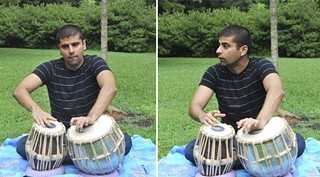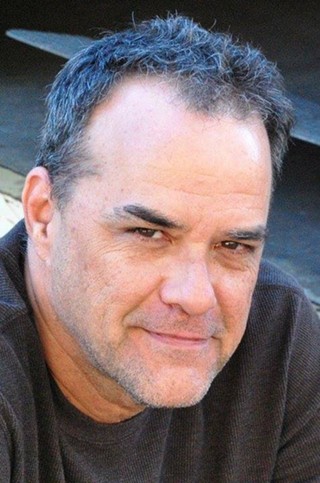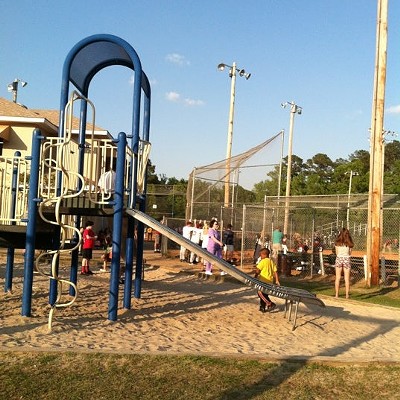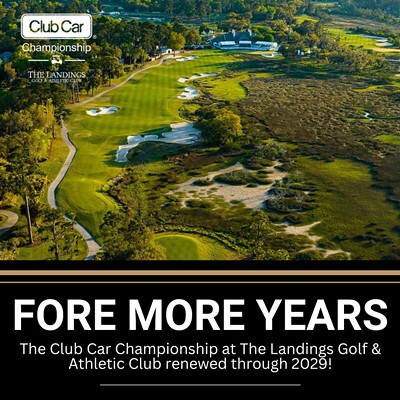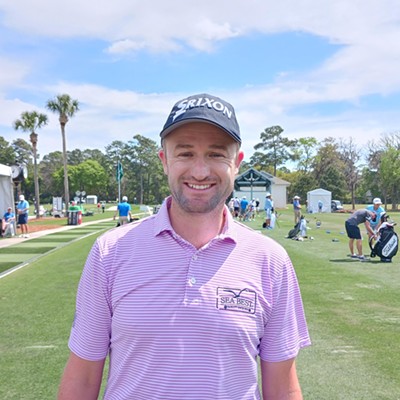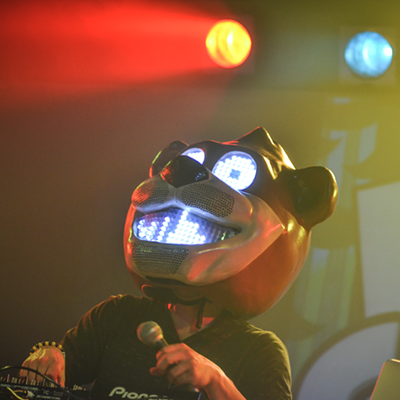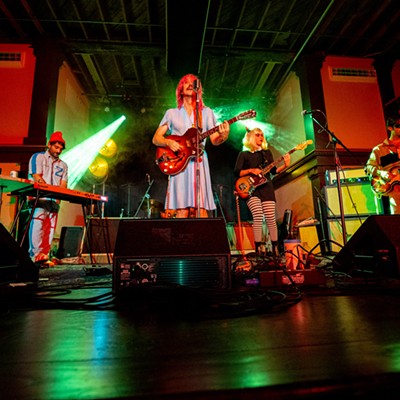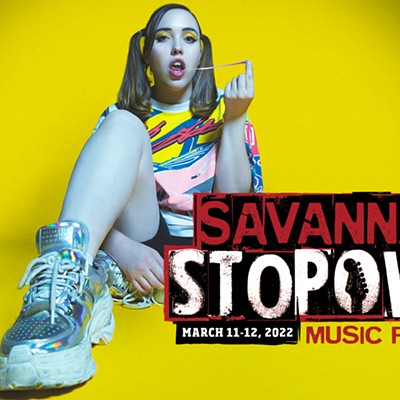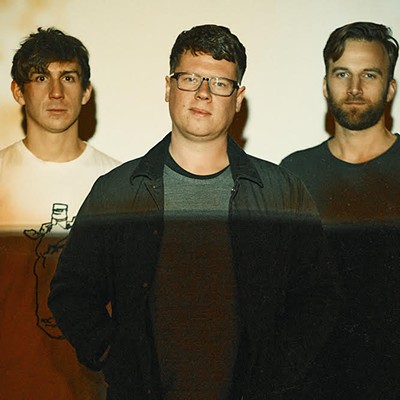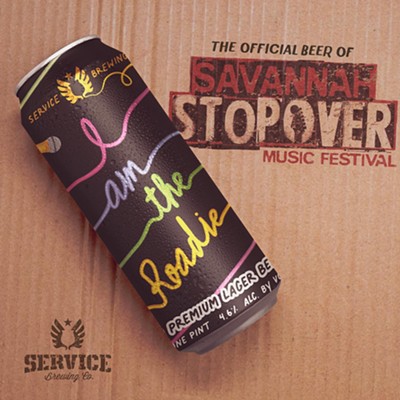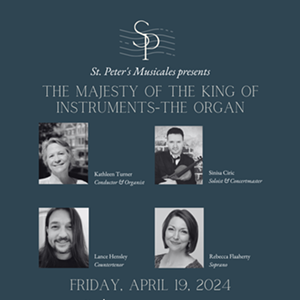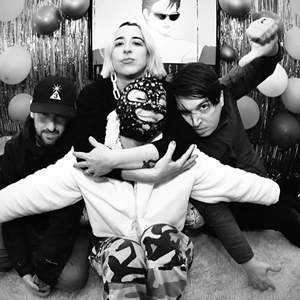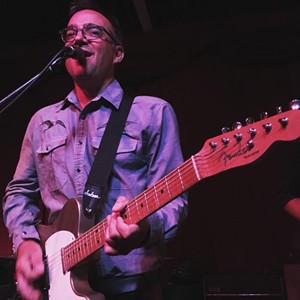An essential element in the performance of certain Indian classical music, the tabla is a pair of small, hand–played upright drums. One is wooden, the other metal, and they are tunable – meaning their pitch can be changed, the attack and/or decay varied, with a quick twist to wooden dowels connected to the drumhead.
Tabla is played with a combination of fingers, palm and wrist, and for a percussion instrument, it’s surprisingly melodic and versatile.
Ashwin Inamdar, 27, has been playing tabla for nearly half his life. A native of Mumbai, the largest city in India, he moved to Savannah three years ago to study technical animation at SCAD (he’d already received an engineering degree in his homeland).
After earning his MFA, Inamdar is now a professor of animation at the school. He teaches several courses, including a new one, “Concept Development,” which to his delight focuses more on the creative side of animation; he also makes his own experimental films.
“I’m absolutely in love with Savannah,” he says. “I might be one of the few people who would openly admit that. As a college town, this is wonderful – a little setting, less distractions, it’s relatively cheaper as compared to L.A., or New York.”
Still, you can take the animator out of India, but you can’t take India out of the animator. Inamdar continues to study, learn and practice tabla, and will accompany Washington State’s Vidhya Ramakrishnan – playing a lute–like instrument called the veena – at a special Indian music concert Friday, Aug. 6 at the Ships of the Sea Museum.
It almost didn’t turn out this way. In the United States, countless children over the years have balked – even rebelled – as their parents made them take lessons on the piano, or the clarinet, or the violin. India has its own version of this tale.
"When I started out, it was definitely forced upon me by my family,” Inamdar explains. “It was more of a tradition: ‘You are growing up, and we are well–to–do, you should start with an instrument.’ That was my mom’s thought.
“And tabla, the kind of instrument that it is, it takes a while to pick up. For the first two years I was just playing basic stuff, which is incredibly boring. And it was my mom who kept pushing me: ‘No way are you quitting this, just because you don’t like it.’”
Teeneaged Ashwin would have to beg off playing with his friends on Saturday afternoons, to go take his tabla lessons.
Everything changed, he explains, “when I could start accompanying people, and they would appreciate it and say ‘You are a good player. This is where you can improve – but you should definitely keep going.’ That started happening in the third or fourth year.”
Technically, there are two distinct variations of Indian music performance: Hindustani, from the northern part of the country, and Carnatic, from the South.
Each area of India is known for its gharana (meaning “house”), a particular style of playing. Inamdar plays the Punjab gharana, which is known for being looser and more open to collaboration and improvisation than the music of the south, which is strictly notated and – in Inamdar’s words – performed to the note, “theoretically, as most maestros would do.”
The Carnatic style, in fact, generally uses a different drum for accompaniment. But Inamdar and Ramakrishnan know one another’s playing, and have agreed that the Savannah concert will be a fascinating fusion.
“I’m going to try and merge myself into it,” Inamdar says. “She’s gonna play her compositions and I’m going to fit in. I feel that the spontaneity is the spice.”
He’s particularly enamored of Zakir Hussain, the master Indian musician who has played tabla with a cross–section of Western artists including John McLaughlin, Bela Fleck and Grateful Dead percussionist Mickey Hart.
(Local world music aficionados will remember Hussain’s stunning collaboration with santoor player Shivkumar Sharma at the 2009 Savannah Music Festival.)
“I’m not a very big fan of people who stick to their classical roots,” Inamdar says. “I like opening up. Out here, I play my tabla with people who like to play fusion and jazz, and rock ‘n’ roll and stuff like that. The versatility, at the end of the day, I feel is the most important thing.”
For Ashwin Inamdar, playing tabla – and discovering new things about all kinds of music – has been a welcome constant in every part of his life.
“I remember when I was back home, doing my engineering, those four years were the most frustrating years of my life,” he says. “My only rescue from that was my instrument. I would come back home all agitated, and the only way I could let go was to sit and play.
“That was, in fact, the four years that I worked the most on my instrument. And I progressed the most in terms of learning. Because not only are you playing, you’re also listening to a lot of music to get better.”
Indian Music Concert (veena and tabla)
Where: Ships of the Sea Museum, 41 MLK Blvd.
When: At 7 p.m. Aug. 6
Admission: Free
Contact: (912) 232–1511

